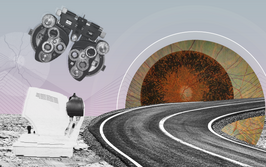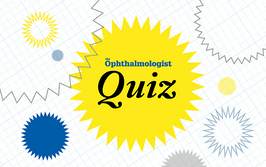How did you get involved with Preceyes?
I got involved with this project way before Preceyes existed. At the time I was in Amsterdam, and along with some engineering professors in Eindhoven, we started work on creating a microrobot that would allow us to carry out vitreoretinal surgery. Our ultimate aim was to use a miniature robotic system to take surgery out of the operating room and into the office. After the first prototype was created, Preceyes came about, and I became the Chief Medical Officer and one of the founding members.
The word robot comes from the Czech for drudgery. How will Preceyes assist surgeons with repetitive tasks like suturing?
We need to look at it in steps. At this stage, the robot provides high precision and also positional memory. It will allow surgeons to do things they’re currently unable to do, and also remove some of the stress of performing surgery. If drudgery is the elimination of stress, then yes we already fit the definition of a robotic system. We’re always under tension when we’re operating, so being able to eliminate it and make surgery more comfortable is one of our aims. At a later stage, we’ll be able to automate most steps in some current procedures, such as standard vitrectomies and cataract surgery. Procedures are programmable – it all comes down to a question of being able to create the right computer program to carry out the function you want.
What does Preceyes offer the day-to-day vitreoretinal surgeon currently?
To be honest, not so much – so far. We’re looking at using it in new procedures, such as gene therapy, for example. In fact, we’re hoping that very shortly, it will be able to carry out peels in a very controlled way. We’re also investigating the possibility of using the robotic arm to provide illumination, and to follow the surgeon’s movements as he or she is trying to do complex procedures in conditions such as diabetic retinopathy.
Another exciting opportunity is the advent of intraoperative OCT – here, we have an extremely highly magnified image of the retina, which in reality is beyond our abilities to carry out surgery. But this is well within the bounds of what the robot can provide – enhanced precision for a highly magnified image! The dissection could be tuned to a very specific plane.
How will robotic devices like Preceyes help with improving throughput?
Getting through cases faster is something that we still have to demonstrate and work on. One of the big advantages of miniaturization is that the whole setup can be secured around the head. We can provide sterility with these miniature systems that can be placed around the head and up to, let’s say the thorax. If we can move out of the operating room and the hospital, and into people’s offices and daycare clinics, then the whole procedure becomes much easier. That’s really part of our goal, and with this in mind we can aim to reduce costs, and increase the quality and efficiency of the work being carried out.
What might robotic devices be doing in 10 years’ time?
Once we start developing systems that allow us to utilize advanced visualization, we could get the robot to use visual cues (for example, from OCT imaging, or a 3D video camera) to carry out automated procedures. We’ll also be able to monitor new types of procedures being developed; automating it and bringing it into a computer system would enable any surgeon to emulate what has been achieved elsewhere – a technique pioneered in Spain or Japan could be carried out safely by someone in Canada, or England… after appropriate virtual training of course!
Could recording robotic procedures reveal that one surgical approach is better than another?
Yes. We will need to build a few more functionalities into our robot, such as sensors that are able to detect and record the forces exerted on ocular tissues. But I think we can go a step further – if we record a sufficient number of procedures, and discover that a particular movement or force can lead to complications, we can provide surgeons with safeguards against maneuvers that might cause complications – or at least inform the surgeon that this course of action could lead to a complication.
In my view of the future, surgery will be a little like being a pilot on a major airline today. Pilots program a computer, and tell it what it should do at various stages of the flight. I think the surgeon of the future is going to be like a pilot. He’s going to tell the robot what should be done, remain in command, and give over the minutiae of surgery to the robotic system.
How will recording (and possibly recreating) surgical techniques facilitate training?
In continental Europe, all residents now have to go through simulators before they’re allowed to do surgery. If this becomes a worldwide trend, I could easily envisage people going from the simulator to a robotic system for surgery. Recording surgeries, the movements and the forces applied could be fed back into the simulator. A trainee in his first steps could possibly “feel” thanks to a computerized feed-back mechanism the exact forces required for the optimal performance of a procedure. Instead of pure trial and error, the learning curve could be dramatically reduced.
Ophthalmic surgeons are enthusiastic about the ergonomics – it could save their backs, allow them to take breaks, and filter out tremor. Could a robotic system extend your career?
When we first applied for a grant, I advanced this argument as one of the great potential benefits of robotic surgery. We train a vitreoretinal fellow for one to two years after completing medical school and a residency. It takes roughly another five years to become fully experienced and able to face the full breadth of what vitreoretinal surgery can challenge you with! That leaves in some cases 15 to 20 years of practice! Retinal surgeons aged 60-plus years are the most experienced, best able to judge when and how to operate, and yet most will stop around this age. By filtering out tremor, providing a more ergonomic stance, and allowing pauses during the procedure, you can extend their activity; but these arguments also apply to younger surgeons. Who wants to work under strain if it can be avoided?
Could you speak to the big picture of health economics?
Robotics, of course, has a cost. But looking beyond that – increased precision means fewer complications, faster recoveries, thanks to a more targeted surgery, which generates savings. In addition, recently trained surgeons will be more efficient in their use of time, as they can skip some of the learning curve. This means that the same efficient use of OR time as is possible by top surgeons will be possible in primary and secondary referral centers, and not only top referral centers. If we look at the field of urology, the vast majority of them opt for robotic prostatectomies, as it allows recent graduates to achieve the same degree of speed and success as their masters. The same will be true for ophthalmology.
Whether or not the Preceyes robot becomes the standard in the future remains to be seen. However, the benefits of robotic-assisted surgery are clear. It is only a question of time before we progressively switch over.
Marc de Smet is Director of MIOS, Lausanne, Switzerland (www.retina-uveitis.eu), and Medical Director of Preceyes Medical Robotics (www.preceyes.nl), Eindhoven, The Netherlands.
I spent seven years as a medical writer, writing primary and review manuscripts, congress presentations and marketing materials for numerous – and mostly German – pharmaceutical companies. Prior to my adventures in medical communications, I was a Wellcome Trust PhD student at the University of Edinburgh.













